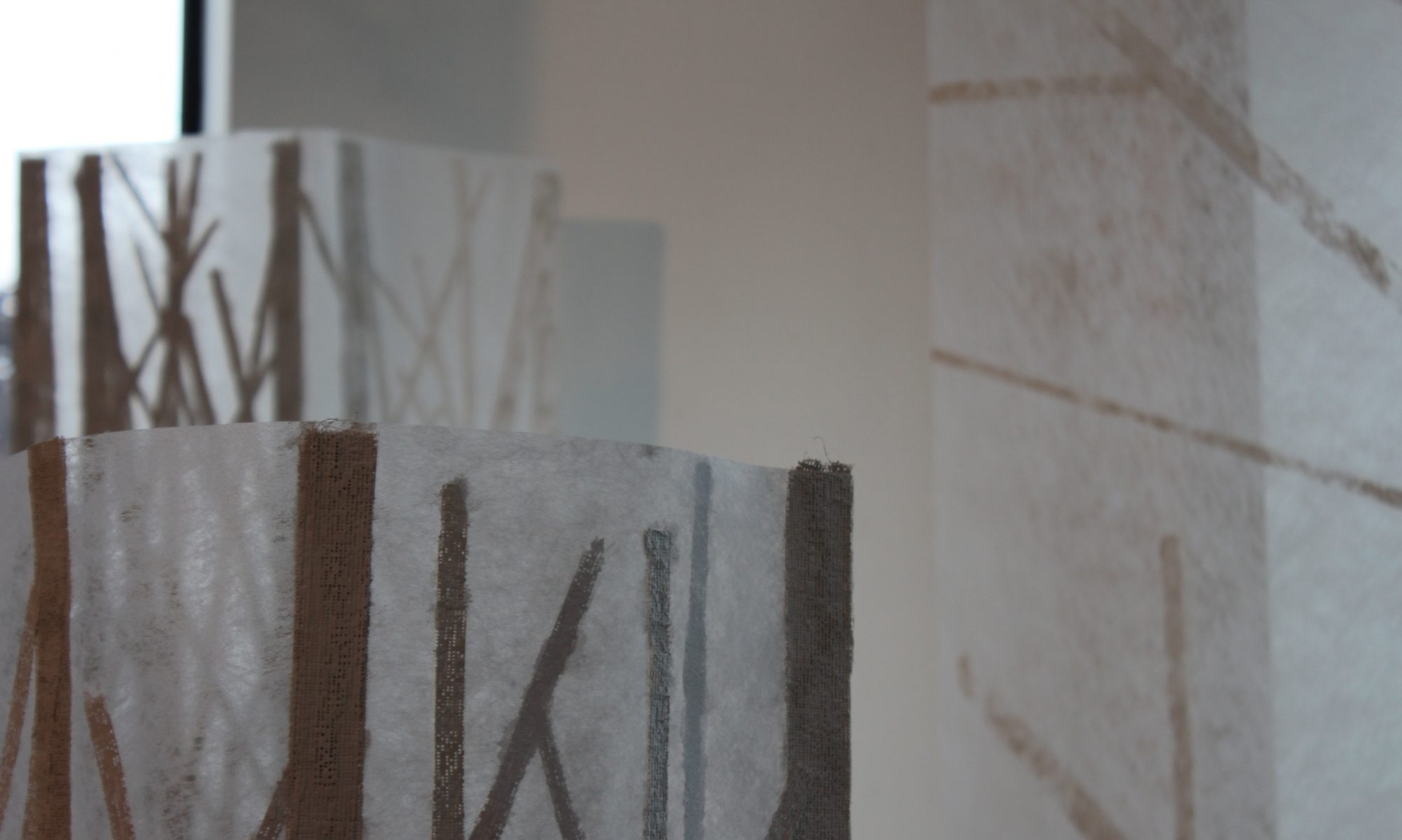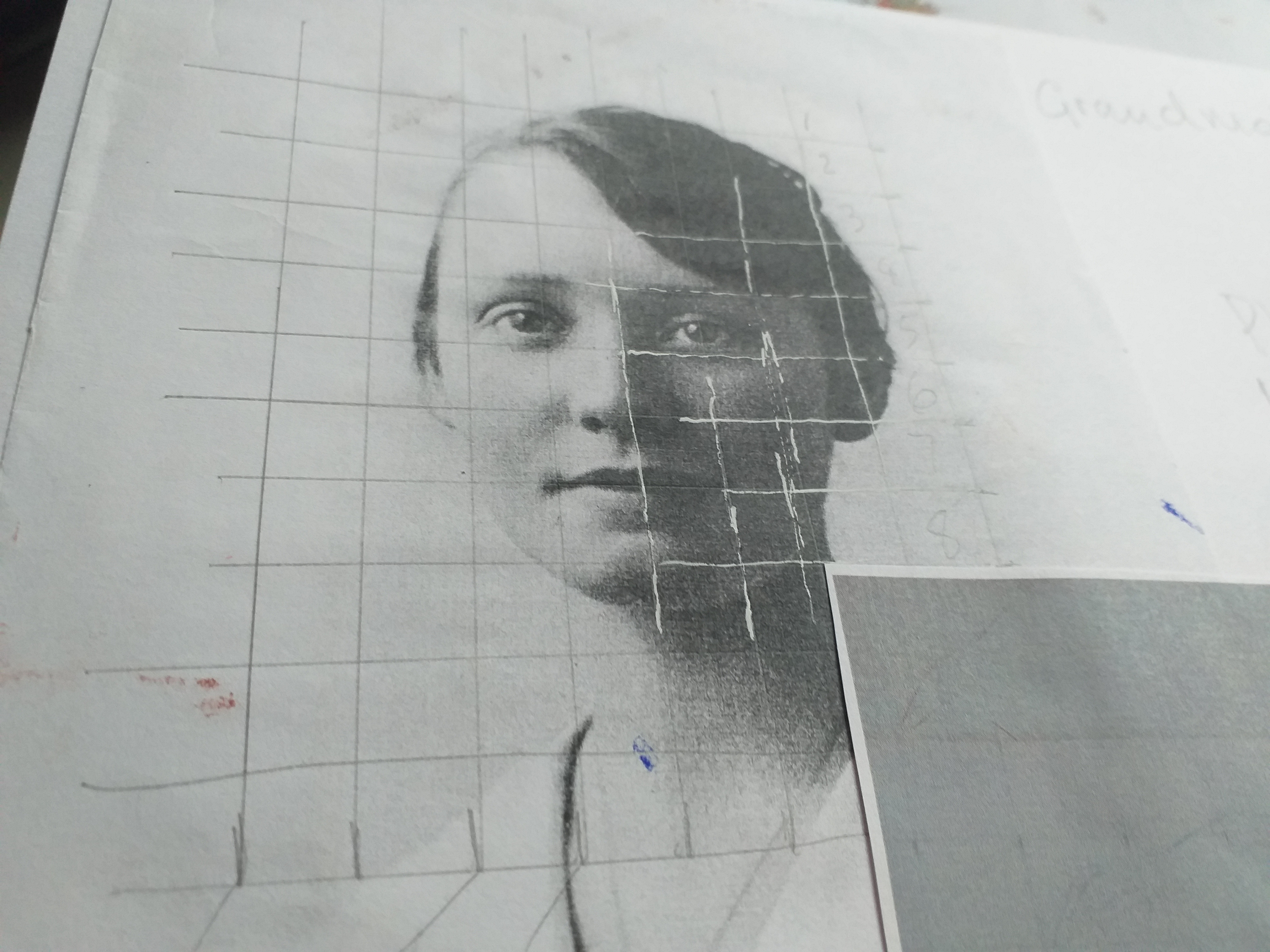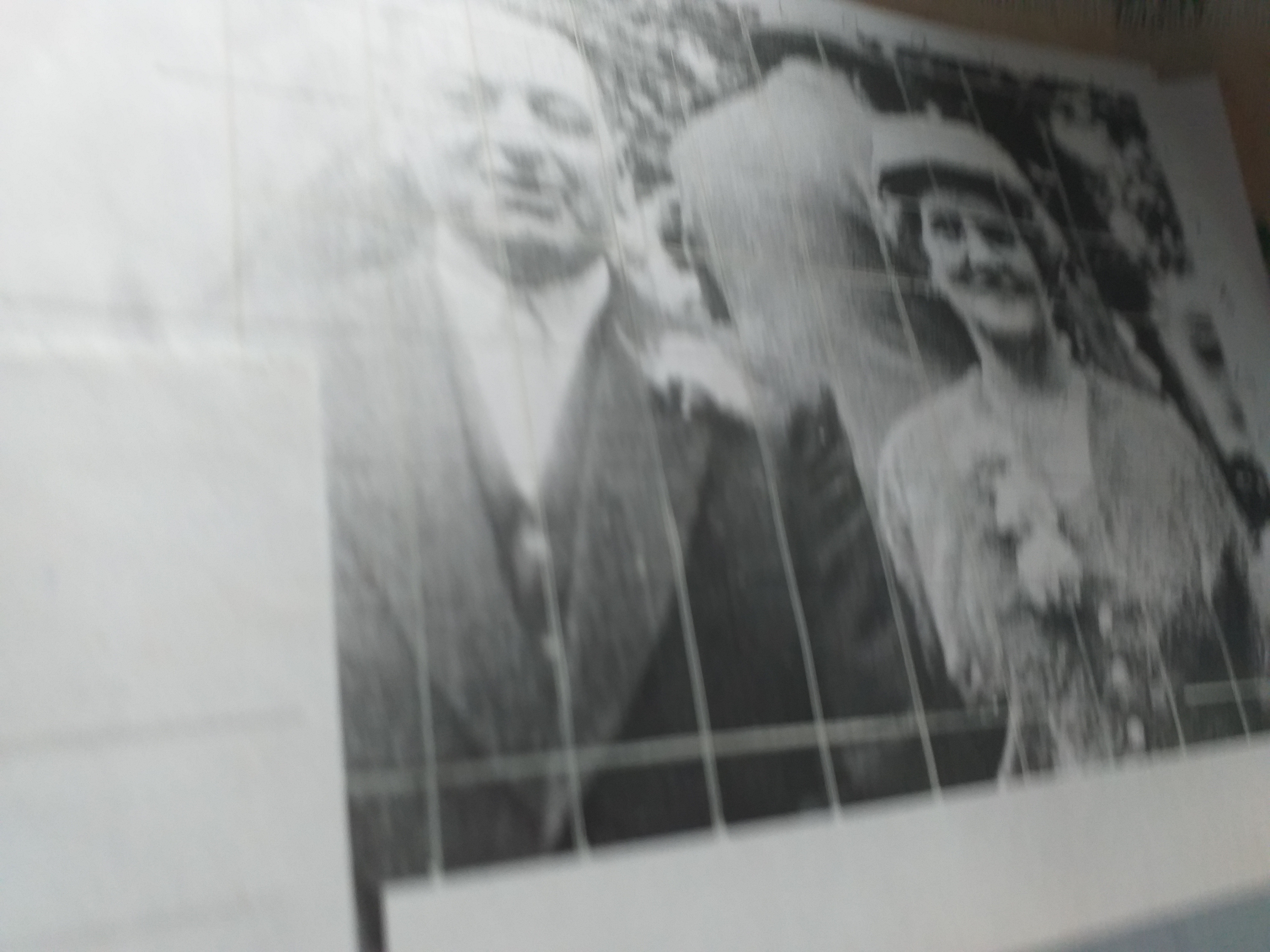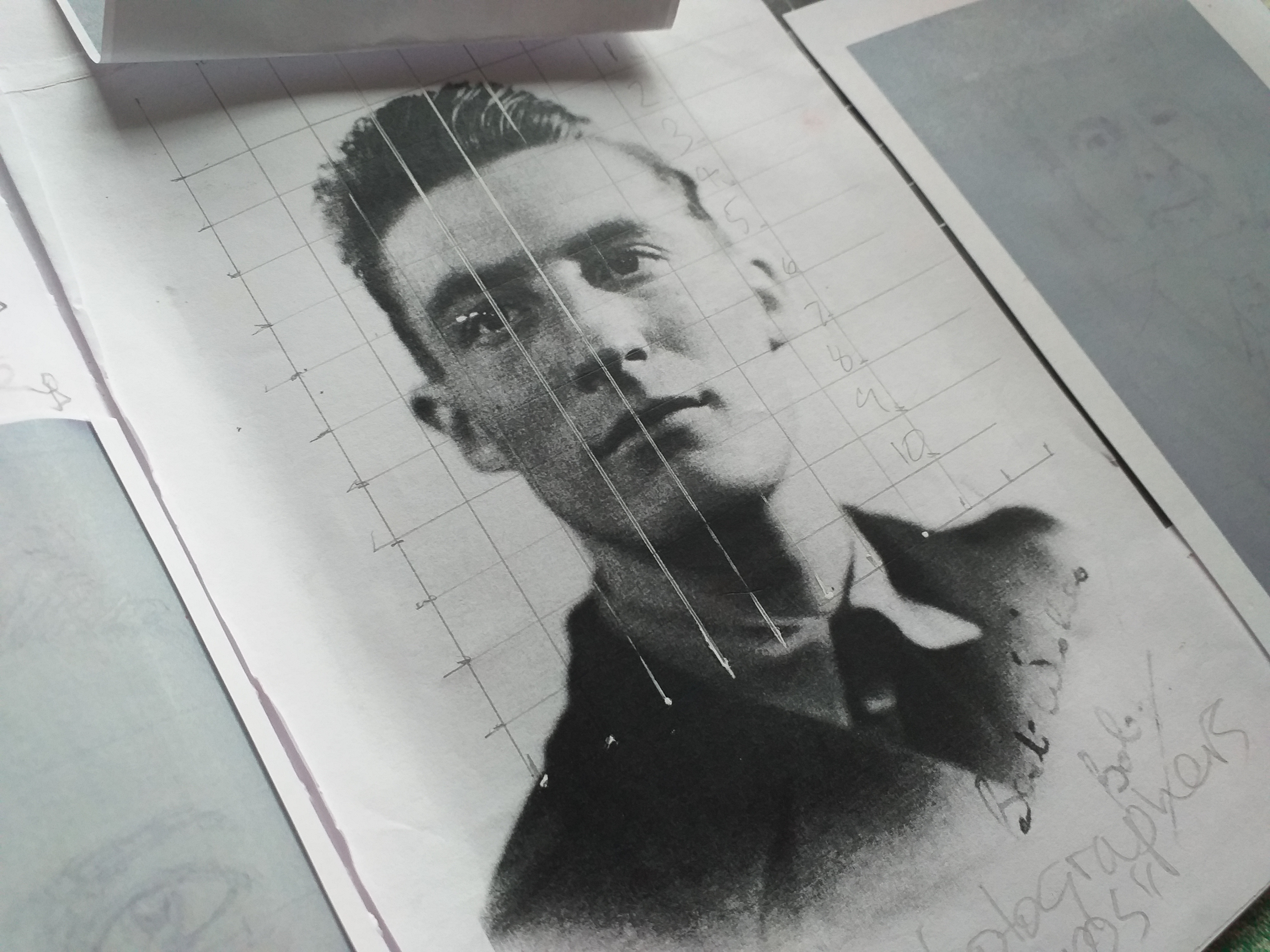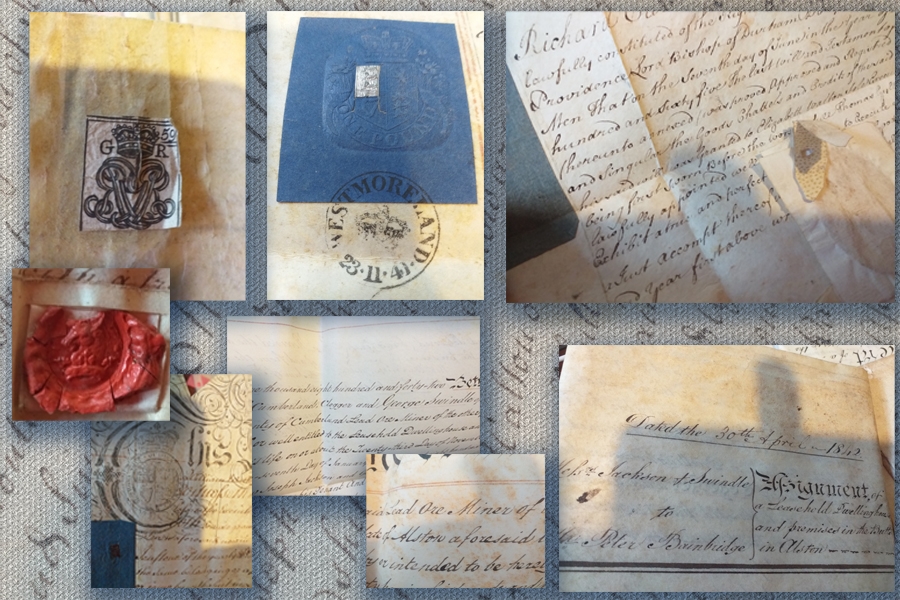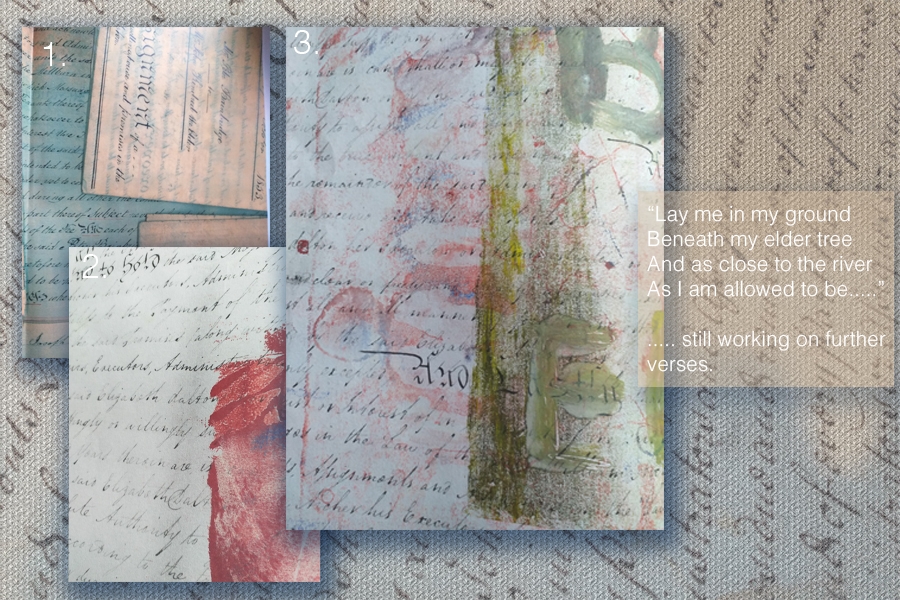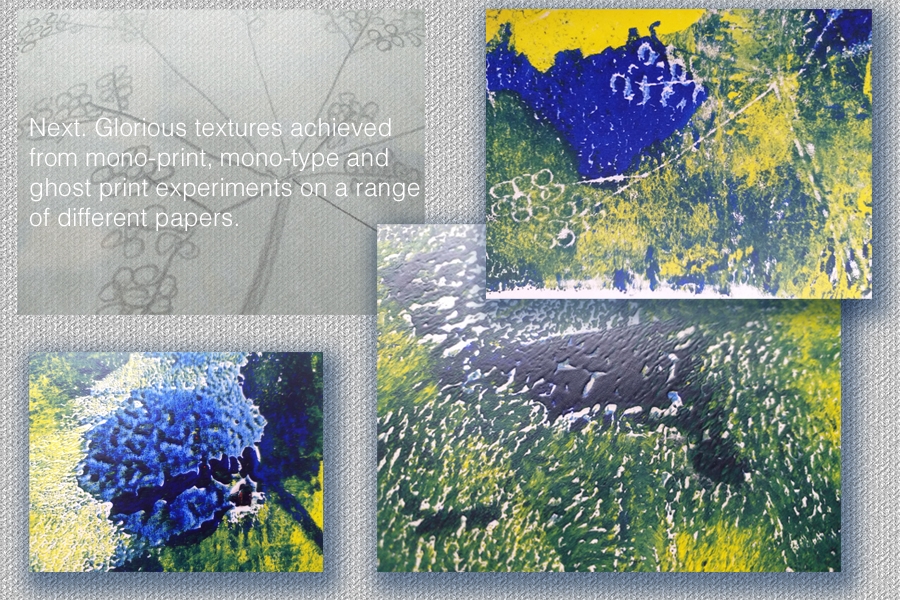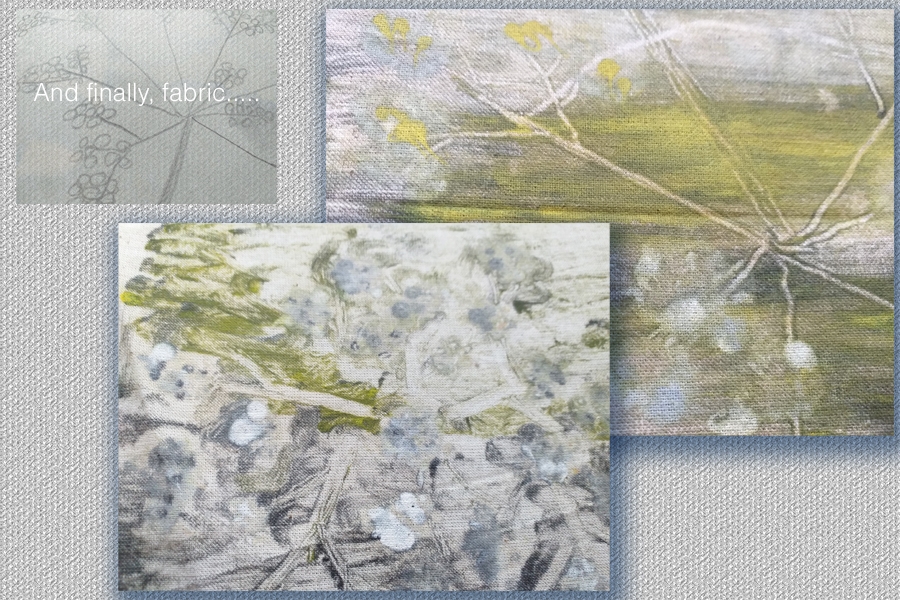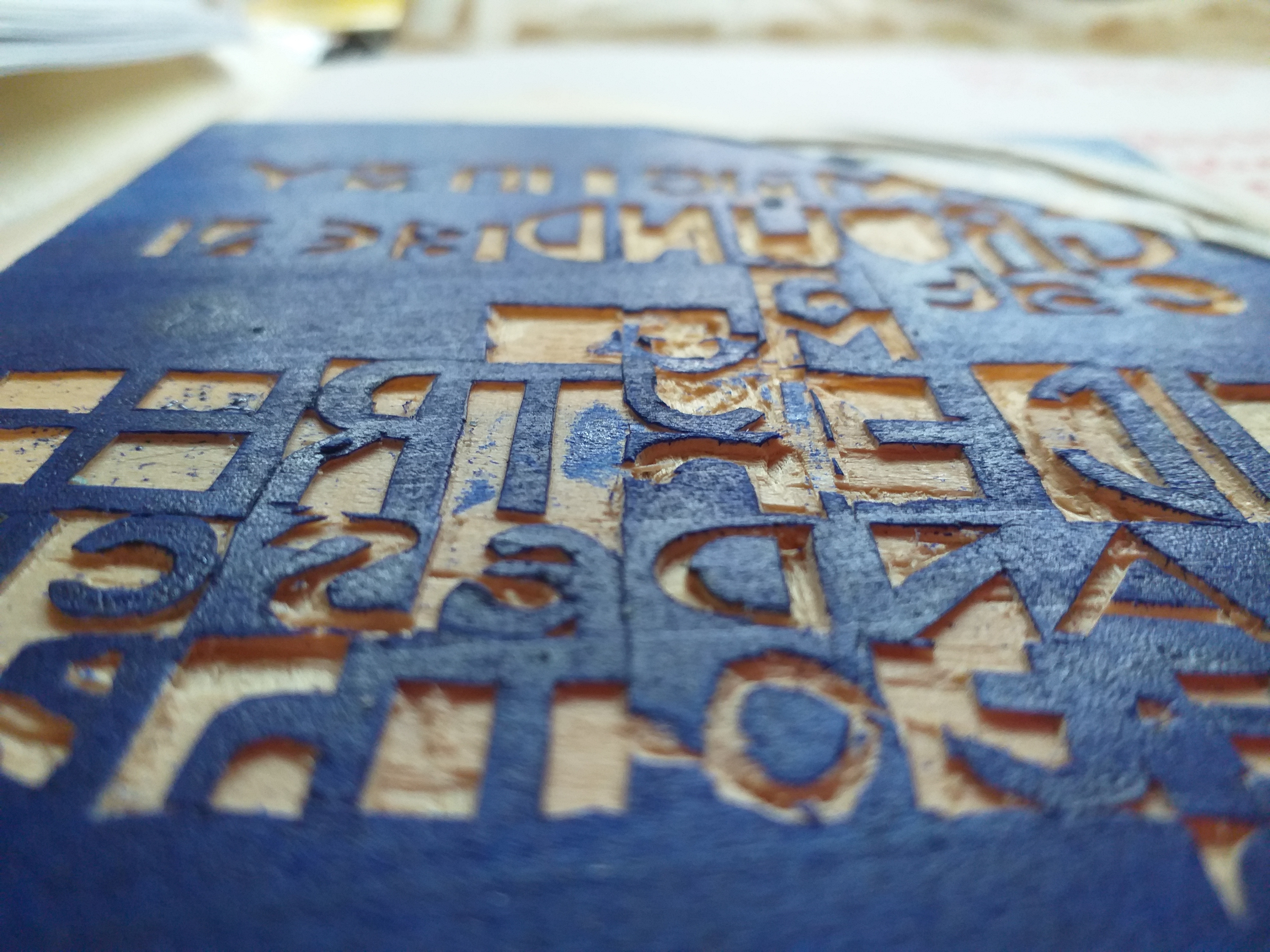Yesterday, the discovery of collagraph printing – wow. Today, continuing to carve plates at home – portraits to include in my ars moriendi book I hope.
I have selected a group of photographs to work from. My paternal grandmother, my maternal grandparents, my father, husband and daughter. (The loved ones who will feature in my book.) It has been interesting to note the different poses and photographic intentions across the pictures. My maternal grand-mother’s is very formal but beautiful, taken in the mid 1920s (possibly for her 21st?) My Father is extremely formally posed in his air-force uniform c. 1948 and most certainly reflected, with gravitas, through the poignant lens of the regimental photographer – that uncomfortable feeling that this may be the last photo to be taken ….. the one that remains…! My grand-parents pose stiffly but, smiling proudly in their best dress, being photographed at my parents’ wedding in the mid-50s but it is not as disciplined as the previous two. Finally, and contrasting by way of not being professionally shot, a lovely, relaxed, smiling picture of my husband an informal pose in the sense that I called to him and said ‘smile’ and a gorgeous ‘snap’ entirely un-posed, of my daughter enjoying the hilarity of watching her girlfriend trying to learn how to spin plates (in a breeze) at a music festival. My intention, in using this range of pictures, is to reflect ‘passage of time’ and ‘moments captured’ on a genealogical time line that echoes (in human terms) the passage of time in the landscape and biologically, – referenced by the old deeds I am using and the elder tree (I grew and planted) that is a theme for my poem.
The process of cutting the plates is slow but extremely enjoyable – I like the clean, meticulous, methodical activity of it just as a complete contrast to (the equally enjoyable and delightfully messy) freer work we did the other day with mono prints. The plates are things of beauty in themselves. It’s almost a shame to ink them.

